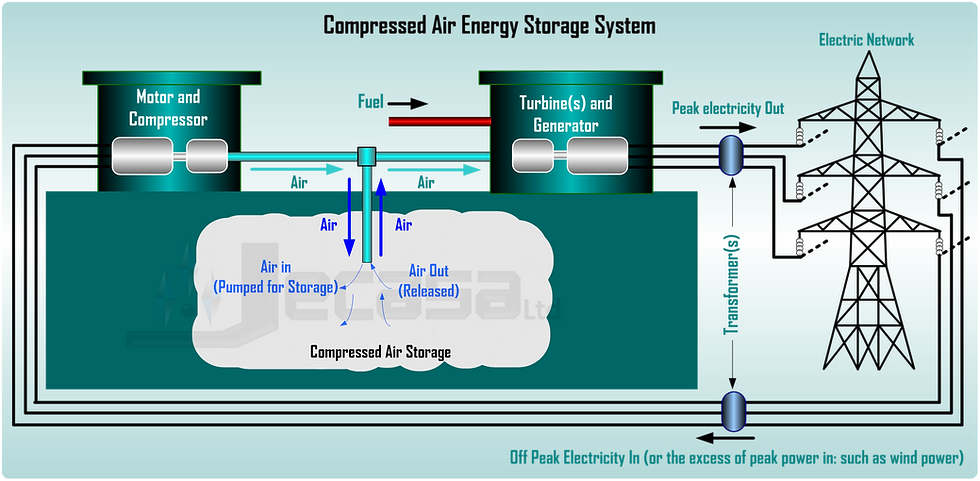Kinetic Energy Storage System: Flywheel Energy Storage (FES)
- Dr Carmona Sanchez

- Jul 1, 2022
- 2 min read
Updated: Aug 6, 2022
Visit our full list of blog posts here.

Fig. 1: A general topology of a FES system (adapted from [Beacon Power, 2012]).
A flywheel is a device which is used to store rotational energy (kinetic energy) [Beacon Power, 2012]. This device was commonly used in combination with a motor/generator to supply emergency power in the case of an interruption of the primary source. The original disadvantages of flywheels were their high initial costs (increasing the running energy costs) and long and frequent periods of repair compared with static systems (such as batteries). However, technology developments have enabled the emergence of a new type of flywheels, such as the “Beacon Power Flywheel (BPF)”. The main principle of operation of the BPF is that it uses a vacuum chamber and magnetic bearing to house the rotors, minimising losses and wear as a consequence [DTI, 2006]; a motor/generator is mounted on the shaft of the rotors [Rounds and Peek, 2009; Beacon Power, 2012]. Fig. 1 shows a general topology of a FES system, however, the technology and diagram of BPF is a bit more complicated than that shown in Fig. 1; see [Beacon Power, 2012] for more detailed information.
The energy stored in a rotating flywheel can be calculated as follows [DTI, 2006]:
E = (1/2)*J*(w^2) (1)
Where:
E = Kinetic energy [Joules]
J = Moment of inertia of the rotor [kg*(m^2)]
w = Rotational rotor speed [rad/s]
Therefore, the storage capacity in a rotor can be increased by incrementing its inertia or its rotational speed. However, increasing the mass (in order to increase the inertia) might provide difficulties in the installation [DTI, 2006]. Therefore, the main objective of “Beacon Power” focuses on taking full advantage of the rotational speed (i.e. increasing it).
Referring to Fig. 1, at the time of charging, the flywheel’s motor acts as a load drawing power from the system to increase the speed of the rotor (power in). At the time of discharging the motor is changed to a generator mode and the rotor kinetic energy is used to drive the generator; the electrical energy obtained is supplied back into the network (power out) [Rounds and Peek, 2009; Beacon Power, 2012].
The Beacon Power Flywheels (BPF’s) are classified as high–speed flywheels. Currently, the “Beacon technology” allows the rotors to be operated at speeds between 8,000 and 16,000 rpm [Rounds and Peek, 2009] and the estimated life of these flywheels is around of 20 years [DTI, 2006]. The efficiency estimated for a flywheel system is about 90% [PIER, 2011].
You may be interested in the following (these are promotional links):



Comments